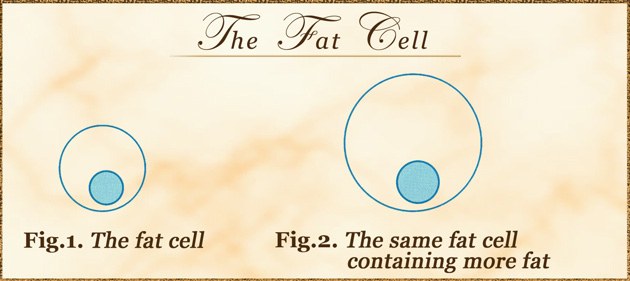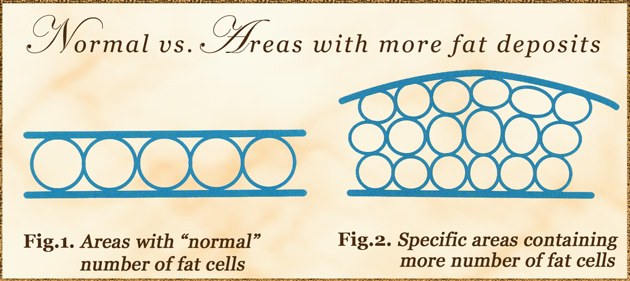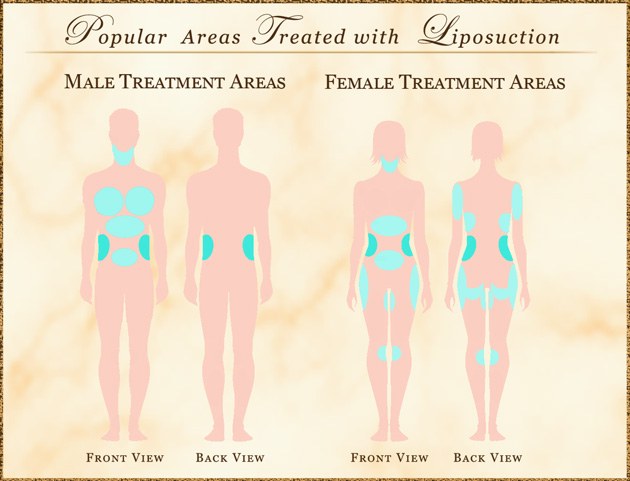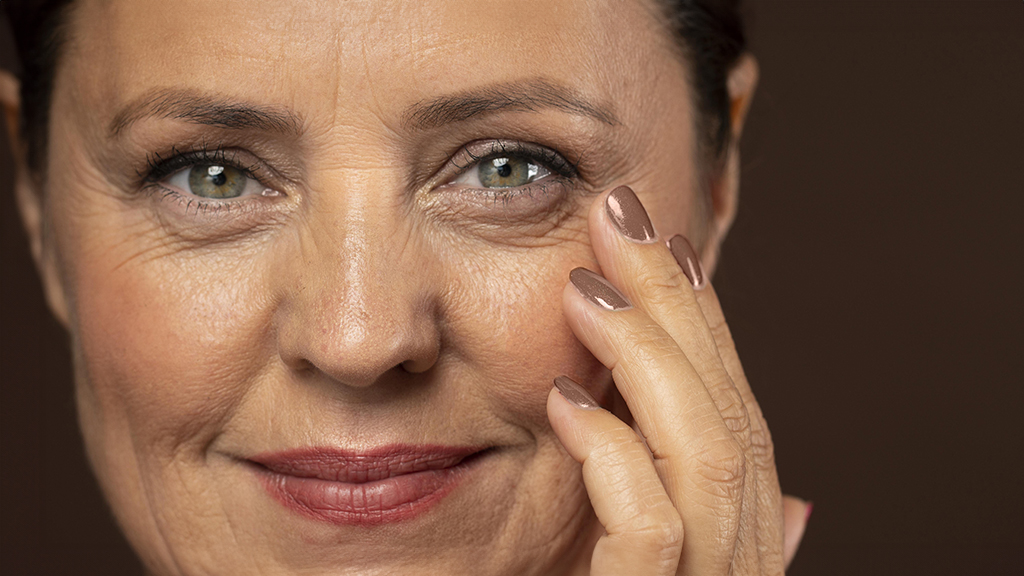Risks & Complications of Liposuction
Every surgical procedure involves a certain amount of risk, and it is important that you understand the risks involved with liposuction. An individual’s choice to undergo a surgical procedure is based on the comparison of the risk to potential benefit. Although the majority of patients do not experience these complications, you should discuss each of them with your surgeon to make sure you understand the risks, potential complications, and consequences of liposuction.
Patient selection – Individuals with poor skin tone, medical problems, obesity, or unrealistic expectations may not be candidates for liposuction.
Bleeding – It is possible, though unusual, to have a bleeding episode during or after surgery. Should post-operative bleeding occur, it may require emergency treatment to drain accumulated blood or require a blood transfusion. Do not take any aspirin or anti-inflammatory medications for seven days before surgery, as this may increase the risk of bleeding. Non-prescription “herbs” and dietary supplements can increase the risk of surgical bleeding.
Infection – An infection is quite unusual after this type of surgery. Should an infection occur, treatment including antibiotics or additional surgery may be necessary. In extremely rare instances, life-threatening infections, including toxic shock syndrome have been noted after liposuction surgery.
Skin scarring – Although good wound healing after a surgical procedure is expected, abnormal scars may occur within the skin and deeper tissues. In rare cases, abnormal scars may result. Scars may be unattractive and of a different color than surrounding skin. This is uncommon following cosmetic surgery. It is most common in those with a family history of excessive scarring; in patients that already have such scars; and in Afro-Caribbeans. However, generally a patient’s individual tendency to such scarring cannot be diagnosed in advance. It is important to realise that the rate at which scars heal and fade varies considerably from patient to patient. Such excessive or hypertrophic scars may require treatment, but may remain permanently excessive.
Change in skin sensation – A temporary decrease in skin sensation after liposuction may occur. This usually resolves over a period of time. Diminished (or complete loss of skin sensation) infrequently occurs and may not totally resolve.
Skin discoloration/swelling – Skin discoloration and swelling normally occurs following liposuction. In rare situations, swelling and skin discoloration may persist for long periods of time. Permanent skin discoloration is rare.
Skin contour irregularities – Contour irregularities and depressions in the skin may occur after liposuction. Visible and palpable wrinkling of skin can occur. Additional treatments including surgery may be necessary to treat skin contour irregularities following liposuction.
Asymmetry – It may not be possible to achieve symmetrical body appearance from liposuction surgery. Factors such a skin tone, bony prominence, and muscle tone may contribute to normal asymmetry in body features.
Seroma – Fluid accumulations infrequently occur in areas where liposuction has been performed. Additional treatments or surgery to drain accumulations of fluid may be necessary.
Long term effects – Subsequent alterations in body contour may occur as the result of aging, weight loss or gain, pregnancy, or other circumstances not related to liposuction.
Tumescent liposuction – There is the possibility that large volumes of fluid containing dilute local anaesthetic drugs and epinephrine that is injected into fatty deposits during surgery may contribute to fluid overload or systemic reaction to these medications. Additional treatment including hospitalization may be necessary.
Surgical anaesthesia – Both local and general anaesthesia involve risk. There is the possibility of complication, injury, and even death from all forms of surgical anaesthesia or sedation.
Allergic reactions – In rare cases, local allergies to tape, suture material, or topical preparations have been reported. Systemic reactions which are more serious may occur due to drugs used during surgery and prescription medicines. Allergic reactions may require additional treatment.
Surgical shock – In rare circumstances, liposuction can cause severe trauma, particularly when multiple or extensive areas are suctioned at one time. Although serious complications are infrequent, infections or exessive fluid loss can lead to severe illness and even death. Should surgical shock occur after liposuction, hospitalization and additional treatment would be necessary. Individuals undergoing liposuction procedures where large volumes of fat are removed are at greater risk of complications. Patients contemplating large volume liposuction, greater than 5000 cc’s, may be advised to have post operative monitoring and aftercare that involves overnight hospitalization.
Skin sag – By and large this is entirely predictable pre-operatively. So long as patients with poor tone pre-operatively are informed of this likelihood, most will accept the potential limitations. This is especially so if their alternative is some form of abdominoplasty etc. However, when so informed, some patients will opt for abdominoplasty. Both choices are entirely satisfactory, depending upon the patient’s aspirations and expectations.
Skin elevations – These are probably a reaction to the operation itself. They are generally considered to be significantly reduced after syringe lipoplasty rather than after liposuction.
Fat Embolism – This is extremely rare after the technique termed superficial syringe lipoplasty, and results after relatively large amounts of fat droplets are able to get into the bloodstream, whence they are able to travel to the lungs. Here they may result in the same complications as pulmonary embolism.
Pulmonary complications – Fat embolism syndrome occurs when fat droplets are trapped in the lungs. This is a very rare and possibly fatal complication of suction-assisted lipectomy. Pulmonary complications may occur secondarily to both blood clots (pulmonary emboli) or partial collapse of the lungs after general anaesthesia. Should either of these complications occur, you may require hospitalization and additional treatment. Pulmonary emboli can be life-threatening or fatal in some circumstances.
Other – You may be disappointed with the results of surgery. Infrequently, it is necessary to perform additional surgery to improve your results.
Skin loss – Skin loss is very rare after liposuction. Additional treatments including surgery may be necessary.
Delayed healing – Wound disruption or delayed wound healing is possible.
Smokers have a greater risk of skin loss and wound healing complications.
Chronic pain – Chronic pain and discomfort following liposuction is very rare.
Additional Surgery Necessary
There are many variable conditions in addition to risk and potential surgical complications that may influence the long term result from liposuction. Even though risks and complications occur infrequently, the risks cited are particularly associated with liposuction. Other complications and risks can occur but are even more uncommon. Should complications occur, additional surgery or other treatments may be necessary. The practice of medicine and surgery is not an exact science. Although good results are expected, there is no guarantee or warranty expressed or implied, on the results that may be obtained.
Additional Advisories
Deep Venous Thrombosis, Cardiac and Pulmonary Complications: Surgery, especially longer procedures, may be associated with the formation of, or increase in, blood clots in the venous system. Pulmonary complications may occur secondarily to blood clots (pulmonary emboli), fat deposits (fat emboli) or partial collapse of the lungs after general anaesthesia. Pulmonary and fat emboli can be life threatening or fatal in some circumstances. Air travel, inactivity and other conditions may increase the incidents of blood clots travelling to the lung causing a major blood clot that may result in death. It is important to discuss with your surgeon any past history of blood clots of swollen legs that may contribute to this condition. Cardiac complications are a risk with any surgery and anaesthesia, even in patients without symptoms. If you experience shortness of breath, chest pain or unusual heart beats, seek medical attention immediately. Should any of these complications occur, you might require hospitalisation and additional treatments.
Smoking, second-Hand Smoke Exposure, Nicotine Products (Patch, Gum, Nasal spray): Patients who are currently smoking, use tobacco products, or nicotine products are at a greater risk for significant surgical complications of skin dying, delay in healing and additional scarring. Individuals exposed to second hand smoke are also at potential risk for similar complications attributable to nicotine exposure. Additionally, smokers may have a significant negative effect on anaesthesia and recovery from anaesthesia, with coughing and possibly increased bleeding. Individuals who are not exposed to tobacco smoke or nicotine containing products have a significantly lower risk of this type of complication.
It is important to refrain from smoking at least six weeks before surgery and until your surgeon states it is safe to return, if desired.
Female patients information: It is important to inform your surgeon if you use birth control pills, estrogen replacement, or if you believe you may be pregnant. Many medications including antibiotics may neutralize the preventive effects of birth control pills, allowing for conception and pregnancy.
Intimate Relations after Surgery: Surgery involves coagulating of blood vessels and increased activity of any kind may open these vessels leading to a bleed or hematoma. Increased activity that increase your pulse or heart rate may cause additional bruising, swelling and the need for return to surgery and control of bleeding. It is wise to refrain from sexual activity until your surgeon states it is safe.
Medications: There are many adverse reactions that occur as the result of taking over the counter, herbal, and/or prescription medications. Be sure to check with your surgeon about any drug interactions that may exist with medication that you are already taking. If you have an adverse reaction, stop the medication immediately and call your surgeon for further instructions. If the reaction is sever, go immediately to the nearest hospital. When taking the prescribe pain medication after surgery, realize that they can affect your thought process. Do not drive, do not operate complex equipment, do not make any important decisions and do not drink any alcohol while taking these medications. Be sure to take your prescribed medication only as directed.

If we take a very simplistic view of an area of the body, then one might imagine the skin, with subcutaneous fat on the inside, with muscles and other structures underneath. As weight is put on, the fat cells increase in size, with the result that the area becomes generally larger. For a lot of people losing weight, toning up and achieving the figure they want requires a combination of healthy eating and regular exercise. However, certain individuals have collections of fat in specific anatomical areas and when these individuals put on weight, they feel that it has become localised to these areas and usually no amount of exercise or dieting can shift these stubborn fat pockets.

Typical problem areas that can be treated with liposuction surgery include:
- Chin / Neck
- Chest
- Arms
- Armpit & Bra area
- Flanks (Love handles) & Hips
- Upper and Lower Abdomen (or Stomach)
- Inner and Outer Thighs
- Knees

As weight is put on, the fat cells increase in size, with the result that the “problem area(s) becomes generally larger. Should weight be lost, then the weight tends to come off uniformly also, leaving the “problem” area(s), still larger than the rest of the body. In these instances, Liposuction may be the only solution to shape the contour of the body and bring it into proportion.
Combined Ultrasound & Radio Frequency (RF) Liposuction
In purely technical terms, the advanced Combined Ultrasound & RF Liposuction technology combines the benefits of Low Frequency Ultrasound Cavitation and Tumescent Liposuction with Mono-polar Radio Frequency. The former melts fat without any associated bleeding and swelling, whilst the RF waves of the latter effectively tighten the skin as the energy is transported through the various layers of tissue and stimulate the action of existing collagen.
Combined Ultrasound & RF Liposuction represents the most advanced development of the “cavitation” concept. Cavitation is a natural phenomenon using low frequency ultrasound to apply a strong pressure wave to fat cell membranes which they are unable to withstand and therefore disintegrate into a liquid state, resulting in a natural form of fat loss. However, unlike other cavitation-based systems, Combined Ultrasound & RF Liposuction treatment acts from “within”, generating ultrasonic waves along the entire length of its high tech cannula probe in addition to the tip. It is thus able to target even the most restricted areas that have up until now been inaccessible.
A second major benefit, is that radio frequency (RF) waves are simultaneously emitted from the full length of the cannula body, resulting in firming and tightening of the skin through increased collagen production.
The fat extraction in this procedure is similar to that of other Liposuction technologies in which fat is extracted mechanically through suction. However with the Combined Ultrasound & RF Liposuction, a key benefit to the patient is that, since the fat has already melted prior to extraction, the procedure is much less invasive, very quick and very safe.
Why do patients request liposuction?
Many of our patients have battled for many years to reduce localised deposits of fat and to improve the shape and tone of their body through exercise. For many of these problems, Liposuction is the only solution. However it is not an effective treatment for weight loss or obesity, and it is not an alternative to exercise and diet
What to consider at this stage
Before you see the surgeon, it is important to consider exactly what you are trying to achieve from your surgery. In particular, you must understand that Lipoplasty is most definitely not a treatment for weight loss or obesity.
The Importance of a thorough Consultation
The importance of the initial consultation cannot be overemphasised. At your consultation, Dr Allen Rezai will fully discuss every aspect of your aesthetic goals and address any concerns you may have. He places the utmost importance on providing his patients with all the information they need to make fully informed decisions, ensuring each one arrives at the outcome that’s best for them.
A thorough medical history and physical examination during the consultation usually reveals whether or not you are a good candidate for the procedure, and if so, what the best treatment option would be. Working together during your consultation, a bespoke surgical plan will be developed for you. Dr Rezai will explain in detail the treatment options available, the techniques that would be used, and any potential risks and complications you need to be made aware of. If you are a smoker, you should stop smoking at least 6 weeks prior to surgery and be prepared to wait at least 6 weeks after your surgery before you start again. This is to reduce the risk of complications.
Routine blood tests are required for all patients about 2 weeks prior to the surgery and, in most cases, a urine pregnancy test will also be performed at the hospital on the day of surgery. An ECG is also required for patients over 50 years of age.
A thorough physical examination during the consultation usually reveals the best procedures for each patient. The physical examination will determine the type of Liposuction suitable for you.
Working together during your consultation, a bespoke surgical plan will be developed for you. Dr Rezai will explain in detail the treatment options available, the techniques that would be used, and any potential risks and complications you need to be made aware of. Informational brochures and fact sheets explaining each procedure will be provided for your review. Dr Rezai will use his expertise and experience to guide you towards the best option, taking into account your anatomy, aesthetic goals and personal circumstances.
The procedure for liposuction surgery
- Liposuction surgery may be carried out under either local anaesthetic with sedation, or general anaesthetic.
- Small (5mm) incisions are made in the skin.
- Anaesthetic solution is injected throughout the area to be operated upon.
- The fat is aspirated through fine cannulae.
- The operation can take from 30 minutes to 3 hours or more depending upon on the volume of fat to be removed.
- Many patients return home the same day. Larger cases will require an overnight hospital stay.
- Patients wear post-surgery compression garment for several weeks.
- For those not engaged in physical work, expect to return to work within 4 to 10 days.
- Anticipate returning to normal physical exercise after 6 to 8 weeks.
At consultation, your surgeon will advise upon a highly personalised treatment plan.
Following the operation
As with all surgery, you must expect to feel bruised and sore. The treated areas are likely to be swollen. It will be necessary for you to wear a tight support garment for several weeks. Most patients are able to fully return to their normal activities within 3 to 4 weeks.
As with the great majority of surgical wounds, those related to lipoplasty will continue to heal for more than one year. It is important to remember that the ‘wounds’ in question relate to the whole area operated upon, and not only to the small areas where the incisions were made.
At Elite Plastic & Cosmetic Surgery Group, we will provide you with detailed post-surgery instructions to expedite your recovery. Should you develop any doubts or concerns following your treatment, however, they would encourage you to contact us straight away.
Risks & Complications
Cosmetic surgery is amongst the safest of medical procedures. However, patients must understand and accept that no surgical procedure is totally without risk.
For further information concerning the risks and complications associated with Liposuction, please refer to Risks and Complications of Liposuction.
At Consultation, your surgeon will discuss these risks with you.
How long will the results of your liposuction surgery last?
Liposuction can produce considerable benefits, and these benefits last exceptionally well. The result is permanent, since the removed fat cells will not regenerate. By maintaining a sensible weight, and preferably also by exercising, the patient will be helping to both maintain and even improve the result of their surgery.
For details about procedures and treatments or for a consultation, advice and prices from our Dubai clinic please call +971 4 431 2396 or use our online form.


